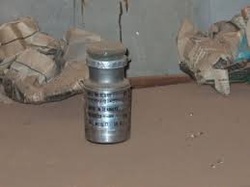In the Cold War period of the 1950s, the CIA installed Radio Free Europe[21]
in Glória do Ribatejo, Portugal, and on June 7, 1956, officially
formalized the relation by inviting the new PIDE’s director, António
Neves Graça, to visit CIA headquarters.[22]
Here are two brief examples from a top-secret document with ten
articles and several sections and clauses, entitled “Proposed Agreement
Between the Policia International e de Defesa do Estado (PIDE) and the
Central Intelligence Agency (CIA)”
...
In 1957 one of the prisoners, Humberto de Lima Morais, stated in his affidavit that after being subjected to the statue torture for several days, he had begun to hear a familiar voice at night. Listening more closely, he had been able to discern the words of a dialogue, in which one voice was clearly his mother’s. She was saying: “‘I am alone and I have no one else, please.’ And the deep male voice of an agent, he thought, had replied, ‘It is only for a day or two, madam.’”[19] However, he could be inclined to admit that it may have been a hallucination, due to his weak physical state. The power of memory on our deepest perceptions and desires is paramount, so that each memory of a voice or other sound is always mediated, deferred and transformed, to a point that “we no longer know what we heard and what we think we’d heard.”[20] Nevertheless, based on similar cases and statements, such apparent hallucinations were actually the result of the use of manipulated sound materials, assembled to produce a state of emotional and psychological confusion through indirect listening, characteristic of acousmatic violence, with the aim of breaking and invading the prisoner’s subjectivity and morale.
http://quod.lib.umich.edu/m/mp/9460447.0009.101/--acousmatic-and-acoustic-violence-and-torture-in-the-estado?rgn=main;view=fulltext
...
In 1957 one of the prisoners, Humberto de Lima Morais, stated in his affidavit that after being subjected to the statue torture for several days, he had begun to hear a familiar voice at night. Listening more closely, he had been able to discern the words of a dialogue, in which one voice was clearly his mother’s. She was saying: “‘I am alone and I have no one else, please.’ And the deep male voice of an agent, he thought, had replied, ‘It is only for a day or two, madam.’”[19] However, he could be inclined to admit that it may have been a hallucination, due to his weak physical state. The power of memory on our deepest perceptions and desires is paramount, so that each memory of a voice or other sound is always mediated, deferred and transformed, to a point that “we no longer know what we heard and what we think we’d heard.”[20] Nevertheless, based on similar cases and statements, such apparent hallucinations were actually the result of the use of manipulated sound materials, assembled to produce a state of emotional and psychological confusion through indirect listening, characteristic of acousmatic violence, with the aim of breaking and invading the prisoner’s subjectivity and morale.
http://quod.lib.umich.edu/m/mp/9460447.0009.101/--acousmatic-and-acoustic-violence-and-torture-in-the-estado?rgn=main;view=fulltext













